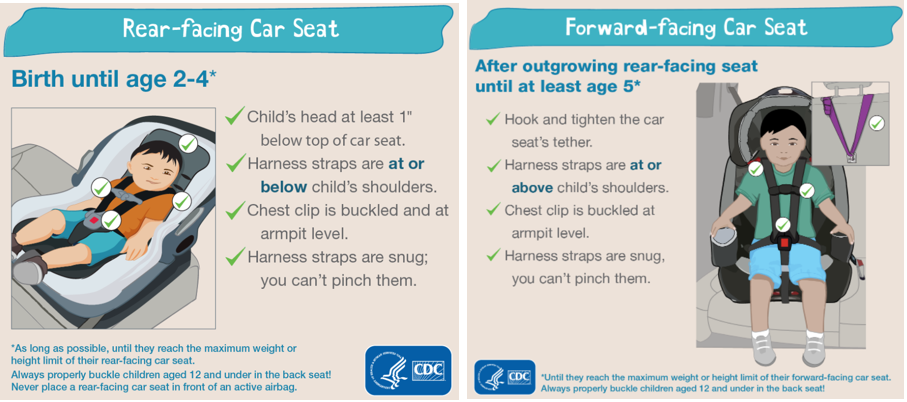Thursday June 16th, 2022
According to a study by the National Highway Traffic Safety Administration (NHTSA), all types of child safety seats misuse was at an average of 46%! (crashstats.nhtsa.dot.gov/Api/Public/ViewPublication/812157)
We intend to provide the best possible care for our little loved ones by purchasing the correct car seats for their age group. However, if mistakes exist, it may further hinder the safety measures that are provided, and can further raise the possibility of risks that are associated with them. Let us see what are some of the mistakes when we install and use the car seats for our little loved ones.
For rear-facing safety seats, 49% of them were misused. The most frequent type of misuse was the incorrect amount of recline in the car seat. It is recommended that rear-facing child seats should have an inclined angle between 30-40 degrees.
Another major mistake that can be prevented easily was the loose installation of child safety seats after installation. According to NHTSA study, of all baby child seats (all types) installed, as high as 85% of them were loose. Regardless of the type of child seat that is fixed to the vehicle, LATCH or vehicle’s seatbelt, there should be less than one inch of movement allowed for the child safety seat (including forward, backward, and side-to-side movements). It was found that for froward facing child safety seat, 61% of the seats were misused. The top misuse was the aforementioned mistake (loose installation), and it was also found in the study that of those 17% child safety seats could move more than two inches.
For forward-facing child safety seats, it was found that many parents failed to anchor the top tether strap which is critical to the safety of the child seat. Some of the tethers that were anchored with straps were also too loose to provide any measure of safety. The top tether is provided for froward facing child seats to anchor to the back of the rear car seat itself, so that the vehicle is involved in an accident, the child safety seat will not continue to travel forward due to momentum.
Another dangerous mistake that can be easily identified is the twisted straps of the seatbelt itself. Whether the car’s seatbelt is used to secure the child safety seat, none of the straps should be twisted, as it may cause the seatbelt not to be safe for its intended use. In addition, the safety strap of the child safety seat itself should not be twisted as well.
What is the use of the seat belt or child safety straps provided on the child seat if they are also not tightened? In order to check on the tightness of the harness, we can pinch the harness to see if there are any loose amount of strap after we have secured both the child seat and the child into the safety seat (often called pinch test). If the harness gives way to some loosening, then we must ensure to secure all loose straps. This is to ensure that the little loved one is safety secured if the vehicle is involved in an accident.
There are also other mistakes that needs to be corrected, but the ones mentioned above are the ones to check first. Parents can certainly refer to the websites below listed as references for further information if necessary. Please remember that we are the last line of defense to ensure that our child is safely secured into their seats so that we can feel safer once our vehicle is in motion.
Text:
Pic:


